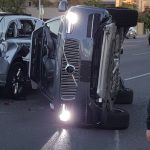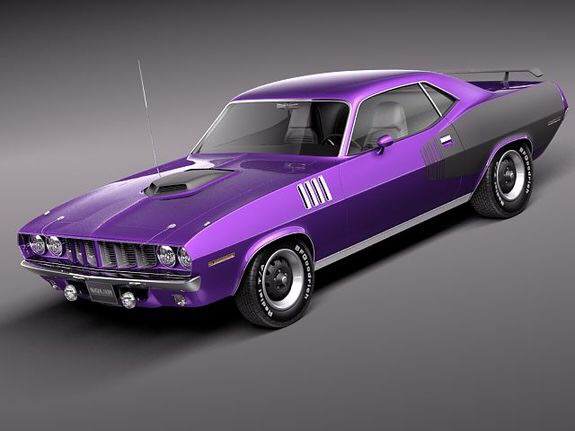We are seeing a lot of press these days about autonomous vehicles. Mostly cars, with Uber doing its best to push the driver out if its cars, meaning even higher profits. Good for them. However, It is not just a quest for self-driving cars, but trucks as well. Again, eliminate the driver, and you have removed the second most expensive aspect of operation. Based on my own experiences, fuel costs still must outweigh the cost of a driver; correct me if I am wrong.
Research pushes forward, and as I write this, autonomous vehicles are operating on our highways and byways. However, every time one of them has a mishap, it is all over the news. Driverless car involved in an accident! Never mind that so far, none of these vehicles operating on public roads are actually driverless. Cities and states are requiring a driver be behind the wheel ready to take over should something go wrong.
 The most recent case was an Uber car involved in a serious crash in Arizona. The pictures that filled the airwaves and social media forced the rideshare company to suspend autonomous vehicle testing until they can build a better mousetrap. Never mind that the crash was not the fault of the autonomous car, or that no one was hurt. The other vehicle involved in the crash failed to yield, causing the crash. I heard one report that Uber will work on the software to make it so it can better anticipate errors of other drivers.
The most recent case was an Uber car involved in a serious crash in Arizona. The pictures that filled the airwaves and social media forced the rideshare company to suspend autonomous vehicle testing until they can build a better mousetrap. Never mind that the crash was not the fault of the autonomous car, or that no one was hurt. The other vehicle involved in the crash failed to yield, causing the crash. I heard one report that Uber will work on the software to make it so it can better anticipate errors of other drivers.
Uber must have some seriously gifted software developers if they can write code that can read minds.
Driverless car, or regular car with an attentive driver, that crash was going to happen. It was the product of all crashes, someone dropped the ball, and the simple law of physics that states, two objects cannot occupy the same space at the same time, comes into play. Matter meeting matter…crunch!
I am not sure why we are so terrified of self-driving cars, but will readily share the road with very fallible human beings.
In reality, driving is not that hard. It must not be. Here in Minnesota, we hand the keys to children with only six hours of training. None of which requires hands on experience driving in snow. We do not ask them to practice recovering from a skid. Nor do we make them perform crash avoidance maneuvers. At least not until it is too late, and they were lucky enough to survive a crash. Then some parents might follow-up with a defensive driving course.
Frankly, I will happily ride in a car driven by a computer. The computer driven car is not going to be tired because it was up fighting all night with its wife. It will not be hungover after a day of watching football and drinking Miller Lite’s. Nor will it run into the back of a school bus because it was busy checking out the pretty blonde in the car one lane over.
Can something go wrong? Sure, and it will, but all the above happens every day.
The other problem with human drivers is the inability to properly respond in an emergency. The whole Ford/Firestone exploding tire situation. A blown tire should never result in a crash. I have blown a front tire on a full-size van, and we did not roll over. I will bet you this laptop, that even a poorly coded autonomous driving system will not yank the wheel after a tire blowout with enough force to flip a vehicle.
I have taken two Uber rides in the last year. One to the airport, and one home from the same airport. Two different drivers, two different experiences. The driver that picked us up to go the airport was not a Twin Cities native, seemed unwilling to admit he was fallible, and more than once made me wish I stayed in bed. He kept blaming the Uber app for crappy directions, and more than once jostled his passengers.
He did not receive a tip.
The gentlemen who picked us up from the airport was courteous, drove well, and offered good conversation. His car was clean and not one time did I grab the armrest for fear of my life.
I am thinking, had both those trips been in an autonomous vehicle, they would have been mirror images each other. If machines are anything, they are predictable. You, me, and the rest of the human race, not so much. At least not when it comes to driving.
That is why I am somewhat baffled as to why regulators, and I would assume the populace, after all, they are acting in your best interest 😉 are so slow to accept autonomous vehicles. It is not as though, if Uber or Google released fleets of self-driven cars the death toll on the roads will rise precipitously. We are plenty good at killing ourselves without automated vehicles in the fray. Those vehicles will be at the mercy of the same thing the rest of us are, other drivers.
The only way you are going to have crash free autonomous vehicles is if all vehicles can communicate with each other. I am not saying they all must be autonomous, I am just saying they will all have to be interconnected. That way, if I am being a dumb ass, and not making any effort to yield the right of way, my BMW can tell your Tesla, “Hey, my dumb ass driver is looking at porn, and is making no effort to slow down. Can you give right away?” Or, it can do what some cars already can, know that I am in the wrong, and slam on the brakes, leaving me wondering what the hell just happened.
However, we are a long way away from a day when all vehicles can talk to each other.
First off, according to one article I read while researching this post, we need to upgrade our cellular networks to 5G. This will allow the wireless network that these vehicles will use, support the tremendous bandwidth such communication will generate. With current networks, there is a bit of a latency problem.
My question is, if our vehicles are using up all the data, how am I going to play Halo on my in-car entertainment system. There won’t be any bandwidth left for online gaming.
Okay, so now we have the data network to support intervehicle communication, and your Cadillac can tell my BMW to slow the F down. That still isn’t going to prevent the occasional autonomous vehicle crash. Why? Well because my old Chevy cannot talk to your $125, 000 Freightliner semi-truck. That truck with the latest in GPS navigation, third gen lidar sensors, and precision optics for lane control and traffic avoidance. All that fancy electronic data gathering technology is going to provide one thing as it runs over my twelve-year-old Impala. High definition video playback that proves I changed lanes in front of the truck, and slammed on the brakes to make one of Minnesota’s notorious left hand exits. No amount of technology is going to change the laws of physics.
Cars are expensive, and it is only going to get worse. People are keeping their vehicles longer, because it costs so much to buy a new vehicle. With the cost of all this accident avoidance technology only driving the prices higher. Unless the government is willing to give every licensed driver in this country a $40,000 car, there is going to be a long gap between when the technology becomes reliable, and all the vehicles can communicate. And no, I am not calling for the government to buy me a car. It can forgive my student loans, but I don’t want it buying anyone a car.
Finally, even if we get to a point where everyone’s car is at the bare minimum capable of talking to each other, we still will not have crash free roads. Next time you are out there driving around, pay attention the various states of repair for the vehicles around you. Technology takes feeding and care, and not everyone is an IT guru, or a backyard mechanic. If that forward sensor goes out on Billy’s six-year-old Prius, and his Jimmy Johns job went to an autonomous vehicle, he will not be able to repair his vehicle.
How about the classic car collector? Come summer time, those vehicles are everywhere. For some of them, an FM radio was the high-end option. It’s not likely we can shove an electronics sweet into a vehicles with a single wire alternator. If that grey haired old guy suffers a heart attack while cruising along in his 1976 Monte Carlo, there is nothing that will keep him from colliding with your high-tech Subaru, except maybe dumb luck.
Which is all we have now.
Let’s quit fretting about the technology. I want the human factor removed wherever we can supplant it. Let’s hand the keys over to HAL, so my Uber ride to and from the airport is predictable and maybe a little bit safer. Take the driver out of the 80,000-pound semi-truck, and let the machine do the driving. The machine will not get bored, will not get high, or get angry at the idiot doing the speed limit in the left lane. It will just maintain its lane and spacing until it gets to its destination. No need to stop for meals, potty breaks, or a hooker at the truck stop. We can then convert most of the truck stops to drive in theaters, or Amazon drone ports. Maybe the costs of goods will even go down a bit.
 If something goes wrong, the truck just stops. It’s not like anyone will hit it, everyone else has crash avoidance technology. Well except for grandpa in his 1971 Plymouth Cuda blasting CCR from his factory speakers on his way to a car show.
If something goes wrong, the truck just stops. It’s not like anyone will hit it, everyone else has crash avoidance technology. Well except for grandpa in his 1971 Plymouth Cuda blasting CCR from his factory speakers on his way to a car show.
